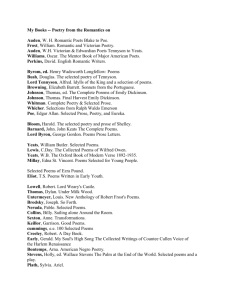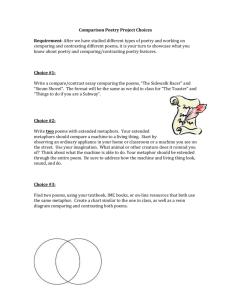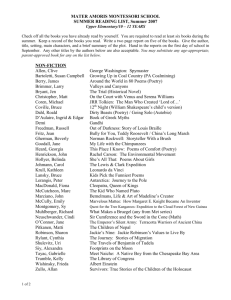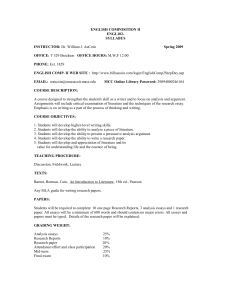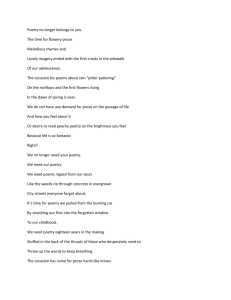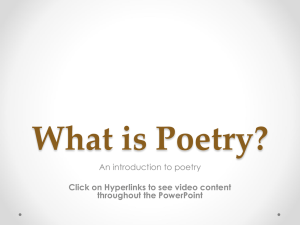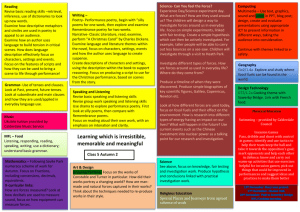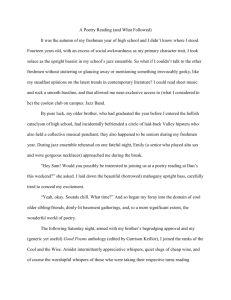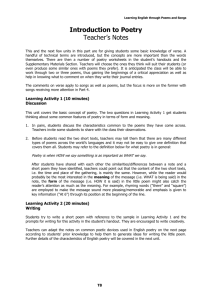Eavan Boland: Biography, Poetry, and Literary Analysis
advertisement
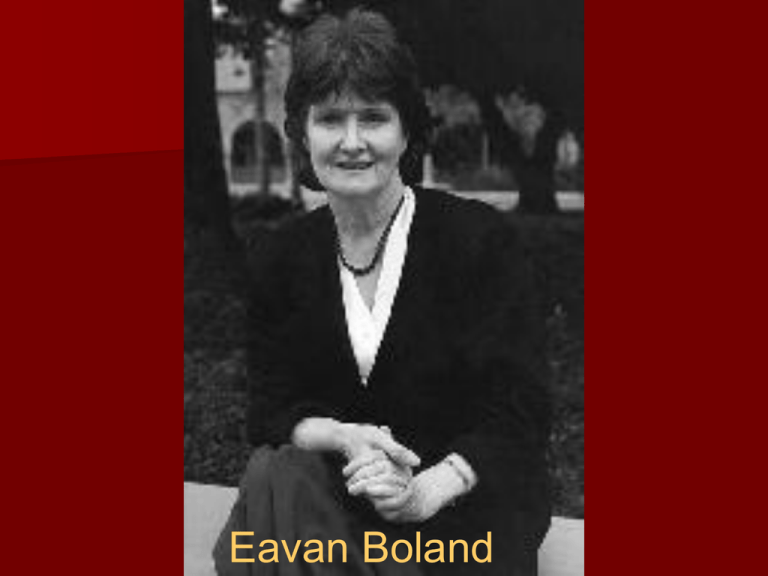
Eavan Boland Brief History Born in Dublin, Ireland 1944 to Frederick Boland a career diplomat who later became the U.N. President and Frances Kelly a noted post-expressionist painter. She was the youngest of five children. Moved with family to London in 1951 where she first encountered anti-Irish sentiment. This strengthened her identification with her Irish heritage Returned to Ireland and attended Trinity College earning her B. A. and publishing poetry. Married author Kevin Casey and had two daughters. Currently teaching at Stanford University Bibliography POETRY 23 Poems (1962) New Territory (1967) The War Horse (1975) In Her Own Image (1980) Night Feed (1982) The Journey (1987) Selected Poems 19801990 (1990) Outside History (1990) In a Time of Violence The Lost Land (1998) Against Love Poetry New Collected Poems Domestic Violence (2007) (1994) (2001) (2005) PROSE Object Lessons: The Life of the Woman and the Poet in Our Time (1995) In 1990, Boland published Outside History, a book of poetry divided into three sections: Object Lessons, Outside History: A Sequence, and Distances. The following is an excerpt from R. T. Smith’s essay “Altered Light: Outside History” “In her relentless excavation of the local events and moments that bear witness to women’s legitimate place in history and the interpretative community, Eavan Boland has for a decade brought to light the nature of the myths that women have been relegated to. . . . Each poem represents a significant skirmish or pitched battle in the quest for full investiture . . .. The initial section, ‘Object Lessons,’ introduces motifs of exile, fragility and damage, and the puzzling interactions” between men and women through meditations on an elegant fan, [etc.]. Although she makes no pretence of presenting ‘objective’ lessons, she does focus on ‘objectionable’ ones, lessons in which the outsider’s perspective is given weight, the acts and words in the private house and garden are recognized as too close to the lens for conventional history to examine. This is an insurrection against traditional male iconography.”
